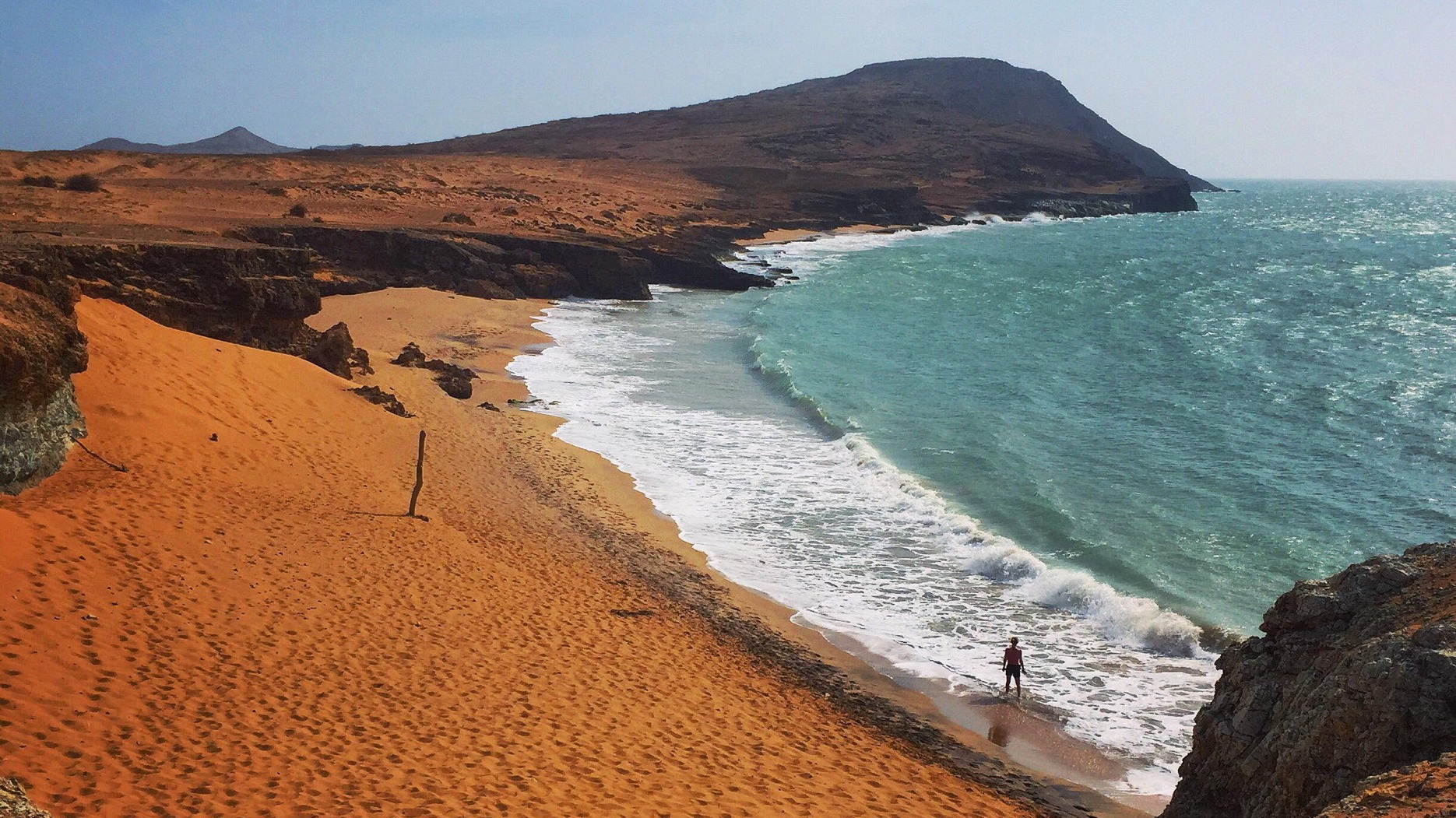Riding in an old Renault at night in La Guajira, Colombia’s northernmost state, our driver, Edison, recognizes an opportunity to fill up his tank not by Chevron, Shell, or Texaco signs over a gas station, but by the sight of a large red plastic container under the only lit lightbulb in sight on the side of the road. As we approach the jug full of gas, Edison bargains with its owner who appears out of the darkness and negotiates the price down to US$1.60 per gallon, less than half the price of gas in Bogotá.
La Guajira is notorious for its black markets. Its large border with Venezuela, its even larger boundary with the Atlantic Ocean, and its flat and barren land on which small planes can easily land have made it ideal for trafficking. Every day tons of cocaine make their way out of the country and thousands of goods from plasma televisions to small bags of rice make their way in.
But as Edison slips the gas salesmen a twenty thousand peso bill for a five-and-a-half gallon jug of gasoline he swears off the times, reminiscing about the days in which he paid fourteen thousand for the same amount. He even remembers once paying eight thousand. And it is not only the cost of gas that is rising. Other goods such as cars and agricultural products have become harder to buy, as have bottles of Old Parr Whisky, a favorite in the region. Scotch whiskey used to be so cheap in La Guajira that while the clear glass of domestic aguardiente bottles often lines the streets outside bars in the rest of Colombia, it is the dark and irregular glass of Old Parr bottles that decorates much of this arid state.
La Guajira did not have much contact with the rest of Colombia until the 1980s when the Wayuu found coal in the state’s southern areas and Colombia became a major cocaine exporting country. By the 1990s paramilitaries, guerrillas, and the army all found reasons to make their way north, attracted by both the expanding coal mine and drug trade. To this day the FARC routinely attacks the Cerrejon, now the world’s largest open coal mine, and its related infrastructure. Defunct paramilitary groups have been replaced by others such as the Aguilas Negras. The army is omnipresent. Basic infrastructure such as water and electricity is lacking and civilian government agencies are sparse.
Colombian President Uribe is praised in the region for reducing paramilitary violence, but this does not mean he is popular. As necessities, and not-so-necessary diversions, become more expensive, many Guajiros blame Uribe for cracking down on black markets without compassion for a people that have become dependent on them.
Guajiros, for example, have become used to underpriced cars brought in from Venezuela, where they are reported as stolen, and sold in La Guajira at a quarter of their market price. For the past half decade the government has allowed cars coming from Venezuela to register in La Guajira, but they receive fronterizos—special license plates that prohibit them from leaving the state. Yet the government is now requiring all public service vehicles to have national license plates (i.e. to be legally imported to Colombia) by mid-2009 to the indignation of cab and bus drivers who claim they cannot afford Colombian-origin automobiles.
Since 2003 the Colombian and Venezuelan governments have also been working together to stem the illegal trafficking of gasoline, which is mostly handled by the indigienous Wayuu population. In that year the state helped the Wayuu establish 11 cooperatives to legally import and sell Venezuelan gas in Colombia, but these have been displaced by cheaper gas prices in the black market. Many of these cooperative gas stations are now just rusting relics to be appreciated from the road.
The Colombian Muslim community, which boasts having the third largest mosque in Latin America, has also been hit. At the Omar Ibn Al-Jattab Mosque in Maicao I was told that of the 4,000 Muslims that inhabited the city when the mosque was constructed in 1997 only 1,000 remain. In a community that relied on importing textiles, clothes, and other goods from Panama, many feel attacked by the government’s crackdown on goods coming in from Panama through irregular ports.
Some don’t necessarily blame Uribe for their woes, but are frustrated with the increasingly periodic quarrels between Uribe and Venezuelan President Chavez, which have at times led Venezuela to tighten up the border and to speculation, both of which increase the price of goods in the region. In a remote town close to Uribia, in northwestern Guajira, Venezuelan Cerveza Polar is usually the only beer available. When I was given a Colombian Cerveza Aguila at a stand on the town’s sole street the owner of the shop explained that his Aguilas were leftovers from Chavez and Uribe’s last spat. “When they fight,” he told me, “prices go up and we begin to get everything Colombian.” He refused to take a side on the border conflict, though. “They say Uribe is a paraco [paramilitary] and Chavez a guerrilla, so I don’t side with either. As long as they don’t fight with us in the middle, I don’t care what they’re up to.”
In La Guajira I could not avoid being overwhelmed by the lack of infrastructure, rampant poverty, and apparent general neglect by the state. But some Guajiros wish the government would just leave them alone.

Reply